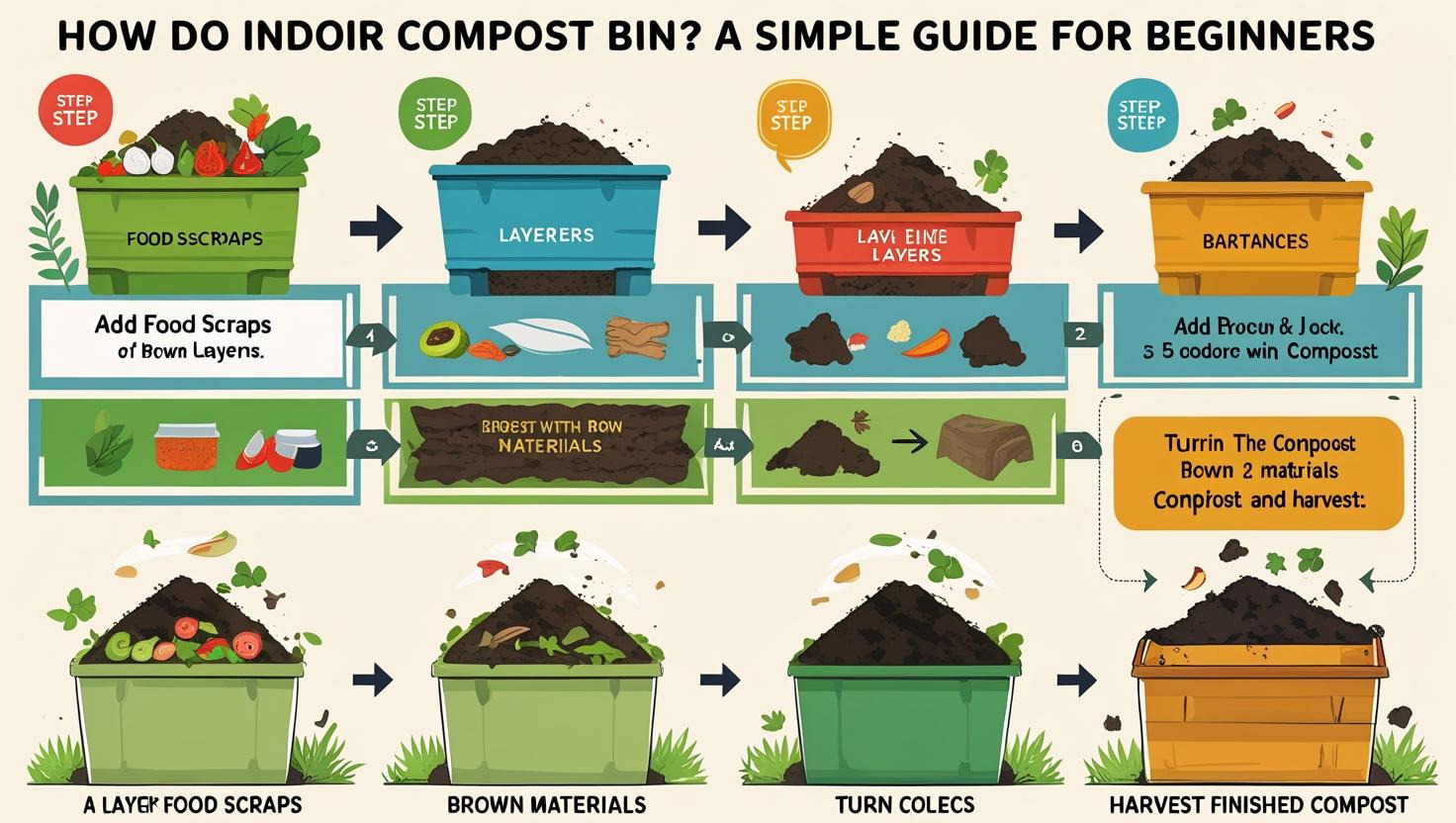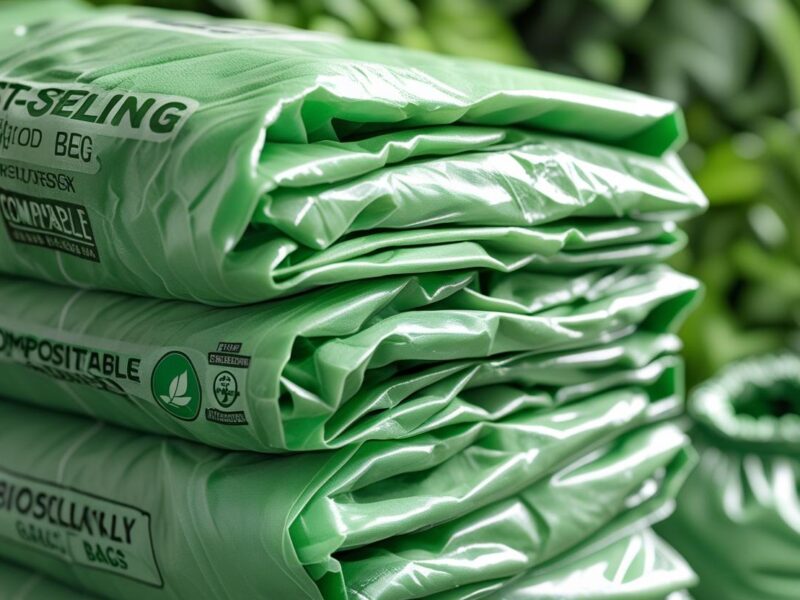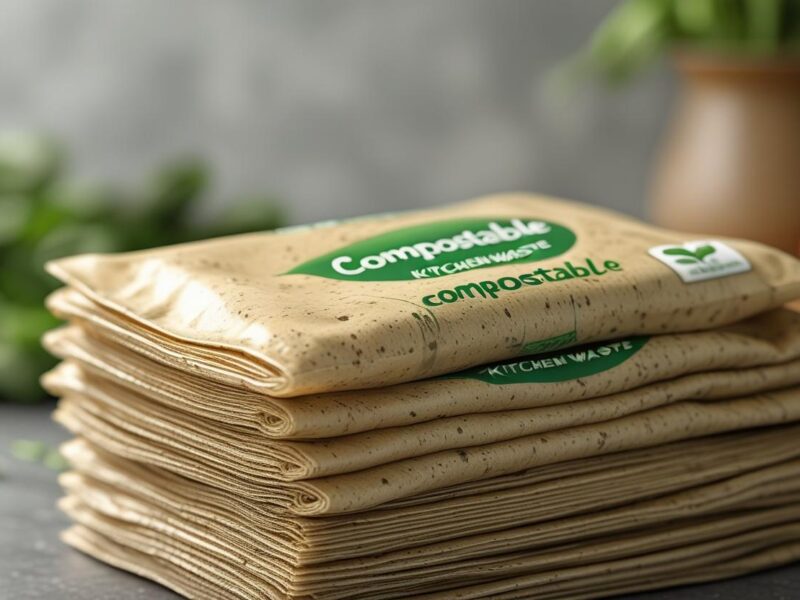In today’s world, more people are looking for eco-friendly ways to manage their household waste. One of the most popular solutions is the indoor compost bin—a simple system that turns your kitchen scraps into nutrient-rich compost right inside your home.
In this article, we’ll explore how indoor compost bins work, why they’re worth using, and how you can start composting at home without mess or bad odor.
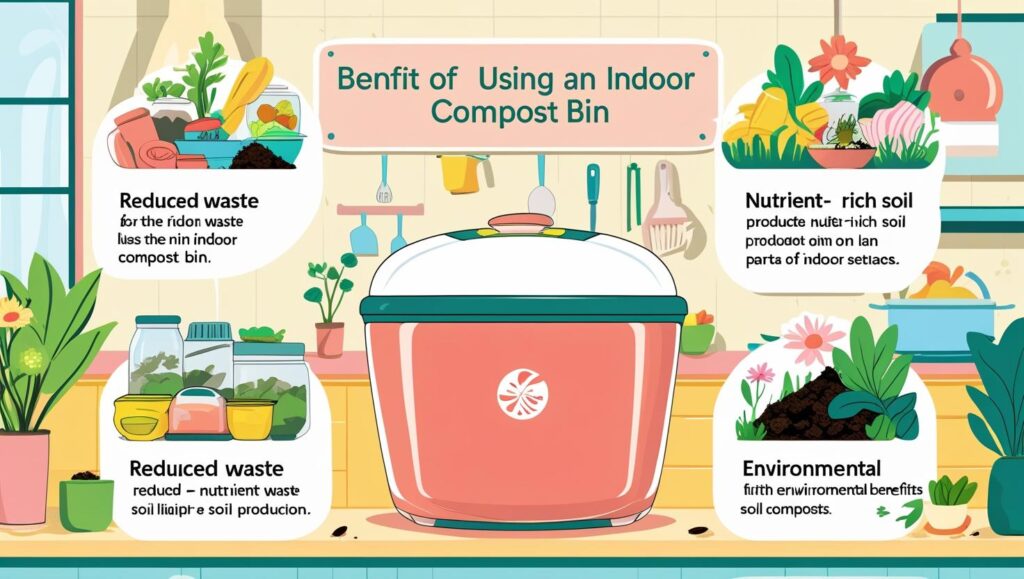
Why Use an Indoor Compost Bin?
An indoor compost bin is more than just a waste container—it’s a small step toward a greener planet.
- Reduce Food Waste – Diverts kitchen scraps from landfills, turning them into compost instead.
- Eco-Friendly – Helps reduce methane emissions from waste disposal sites.
- Improves Soil Health – Creates nutrient-rich organic matter for plants.
- Convenient – Composting indoors means no need for a large garden space.
How Do Indoor Compost Bins Work?
Indoor compost bins operate on the same principle as outdoor composting—microorganisms break down organic waste into compost—but with a few design tweaks to make them suitable for indoor use.
Here’s the process step-by-step:
- Collect Organic Waste
- You place fruit peels, vegetable scraps, coffee grounds, eggshells, and other compostable materials inside the bin.
- Add a Carbon Source
- Balance the “greens” (food waste) with “browns” (shredded paper, dried leaves, coconut coir) to control moisture and odor.
- Aeration
- Many indoor bins have small air vents or filters to allow oxygen in and keep smells out.
- Decomposition
- Microorganisms (bacteria, fungi) break down the waste over several weeks. Some systems use Bokashi fermentation or electric composters to speed things up.
- Harvest the Compost
- After the breakdown process, you get rich, dark compost that can be used for plants, gardens, or potted herbs.
Types of Indoor Compost Bins
1. Bokashi Compost Bin
- Uses a fermentation process with bran inoculated with beneficial microbes.
- Works quickly (2–4 weeks) and handles dairy, meat, and cooked food.
Pros: Fast, low odor, can compost more types of waste.
Cons: Requires Bokashi bran, produces acidic pre-compost that needs curing.
2. Worm Compost Bin (Vermicomposting)
- Uses red wiggler worms to break down organic waste.
- Produces worm castings—a powerful natural fertilizer.
Pros: Great soil amendment, works indoors year-round.
Cons: Needs temperature control, worms need care.
3. Electric Kitchen Composter
- Uses heat, aeration, and grinding to turn waste into compost within hours.
Pros: Extremely fast, odor-free, compact design.
Cons: Expensive, requires electricity.
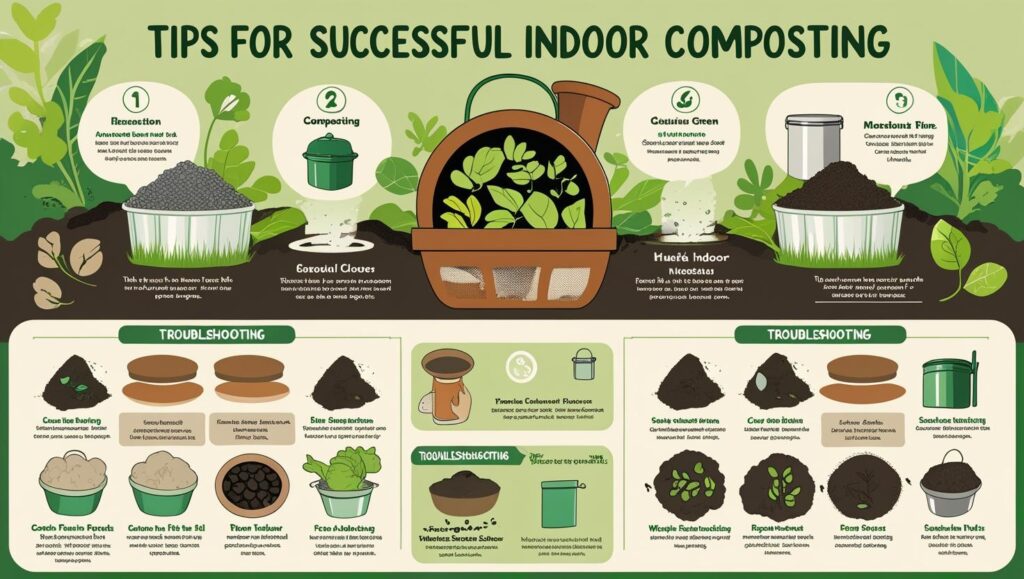
Tips for Successful Indoor Composting
- Keep a balanced ratio of greens (wet food scraps) to browns (dry materials).
- Avoid adding large amounts of citrus, oily food, or excessive liquid.
- Use a charcoal filter lid to prevent odors.
- Stir or mix the compost regularly if your bin requires aeration.
- Keep your bin in a cool, dry place to avoid pests.
Pros and Cons of Indoor Compost Bins
| Pros | Cons |
|---|---|
| Eco-friendly | Some systems require extra materials (e.g., Bokashi bran) |
| Reduces landfill waste | Limited capacity for large households |
| Provides free organic fertilizer | Can take time to produce compost |
| No outdoor space needed | Needs maintenance |
Frequently Asked Questions
Q1: Do indoor compost bins smell?
A: If managed properly with the right greens-to-browns ratio and a filter, indoor compost bins should have little to no odor.
Q2: Can I compost cooked food indoors?
A: Yes, if you use a Bokashi or electric composter. Traditional compost bins may struggle with cooked food.
Q3: How long does it take to make compost indoors?
A: Depending on the method, it can take from 24 hours (electric) to 8 weeks (traditional bins).
Conclusion
Indoor compost bins are a practical, eco-friendly solution for turning kitchen waste into valuable compost without needing outdoor space. Whether you choose a Bokashi system, worm bin, or electric composter, the key is proper balance, aeration, and maintenance.
